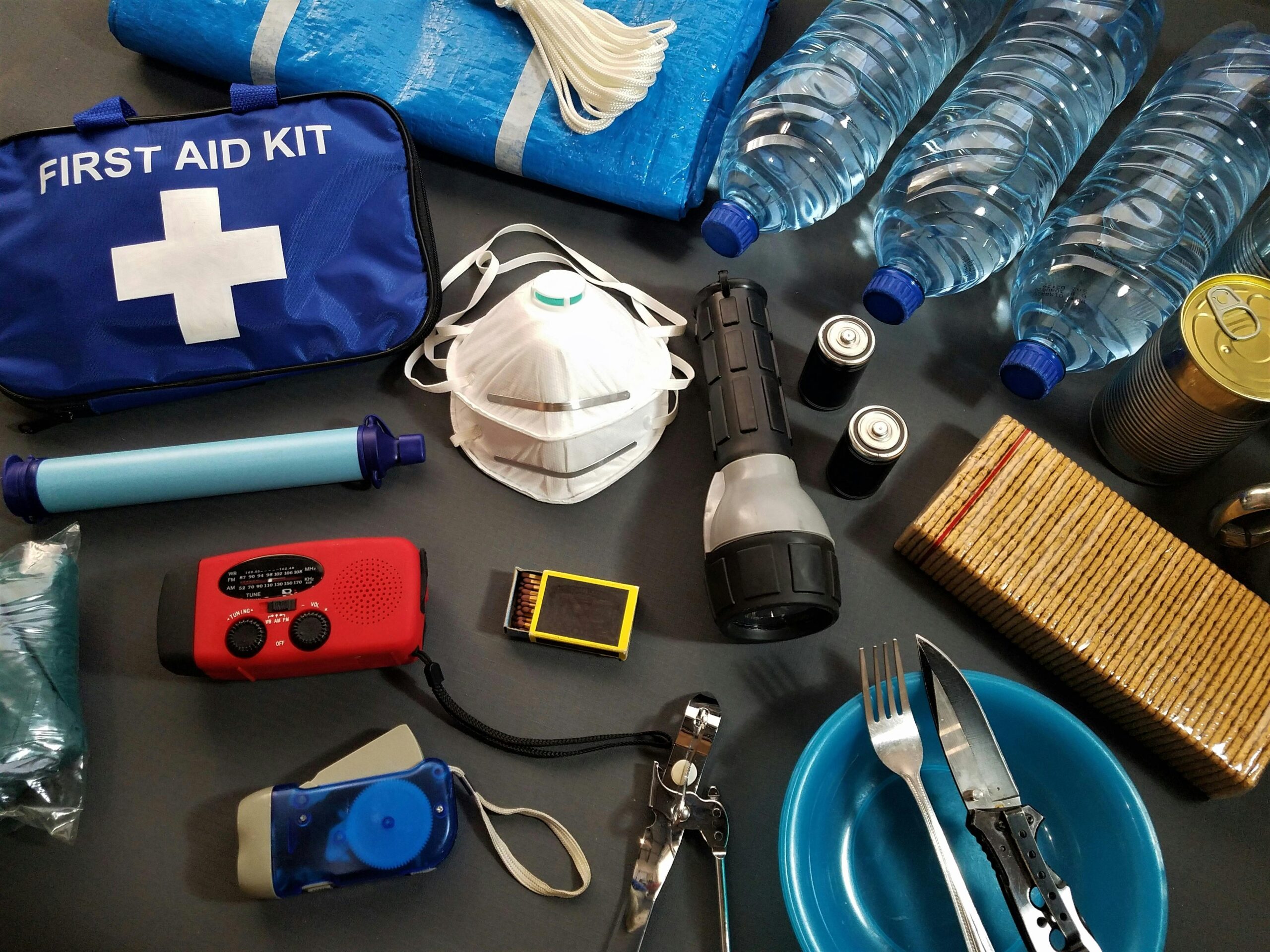Life has a way of throwing surprises such as storms, power outages, sudden evacuations, or even week-long blackouts. The best defense against uncertainty is preparation. Having an emergency plan doesn’t mean expecting disaster but means building peace of mind for any situation.
A well-stocked emergency kit ensures that every family has what they need to stay safe, comfortable, and connected when things don’t go as planned. Below is a detailed, practical checklist designed to help households prepare for any scenario with confidence.
Cover the Basics
When disaster strikes, essentials come first. The rule of thumb is to have at least three days’ worth of supplies for each person, though a week’s supply is ideal if space allows. According to Ready.gov, only 39% of Americans have a formal emergency plan in place. That means most households would struggle during extended disruptions in power or access to stores.
A good emergency kit starts with these foundational items:
1. Water and Food
Water is a non-negotiable necessity. Plan for one gallon per person per day to cover drinking, cooking, and minimal hygiene. Don’t forget to include pets in this calculation.
Stock up on shelf-stable, no-cook food options such as:
- Canned vegetables, beans, and meats
- Nut butters and granola bars
- Dried fruits and trail mix
- Instant noodles and powdered soups
Include a manual can opener and rotate supplies every six months to prevent spoilage.
2. First Aid and Medical Supplies
A comprehensive first aid kit is essential. It should include adhesive bandages, antiseptic wipes, gauze pads, scissors, tweezers, and over-the-counter pain medication.
For families managing chronic conditions or allergies, add personalized items such as prescriptions, inhalers, and topical creams. Products like eczema cream are particularly important for those with sensitive skin that can flare up under stress or environmental changes.
Include a digital thermometer, electrolyte packets, and basic hygiene items like wipes and gloves.
3. Power and Communication
When electricity is unavailable, communication becomes vital. Portable battery packs, car chargers, and solar-powered banks keep phones and devices operational. A hand-crank or battery-powered radio provides crucial updates when networks fail.
Keep a printed list of emergency contacts, local shelter locations, and family meeting points in case digital copies become inaccessible.
4. Warmth and Shelter
Emergencies rarely arrive with perfect weather. Blankets, sleeping bags, and thermal layers can help maintain body temperature during power outages or cold weather.
Include hand warmers, extra socks, and durable rain ponchos. For severe conditions or unexpected evacuations, a lightweight tent or tarp offers shelter until help arrives.
5. Reliable Lighting
Power outages are among the most common emergencies, and reliable lighting can make a huge difference in comfort and safety. Surefire flashlights are a dependable option known for durability and brightness. Keep one in every major room and another in the car.
Store extra batteries, headlamps, and at least one small lantern for hands-free illumination. Glow sticks are also great additions especially in homes with children.
6. Hygiene and Sanitation
Maintaining cleanliness during an emergency helps prevent illness and improves morale. Stock these essentials:
- Hand sanitizer and antibacterial wipes
- Toothpaste and brushes
- Soap and shampoo
- Toilet paper and garbage bags
- Feminine hygiene products
Families should also include extra eczema cream or skin-safe moisturizers for sensitive skin, as dehydration and stress often worsen irritation.
7. Tools and Miscellaneous Gear
Even small tools can have big impacts. Every emergency kit should contain:
- A multi-tool (knife, screwdriver, scissors, etc.)
- Duct tape for quick repairs
- Whistle for signaling
- Waterproof matches or lighter
- Cash in small bills
- Copies of IDs, insurance papers, and medical documents in a waterproof container
It’s also wise to include a few carabiners, zip ties, and a roll of heavy-duty trash bags. They’re versatile for everything from repairs to makeshift rain gear.
8. Pet and Child Essentials
Households with pets or young children should prepare separate supply kits for them.
For pets:
- Food and water bowls
- Leash, carrier, and waste bags
- Extra food and any required medications
For children:
- Extra formula or snacks
- Comfort items like a favorite toy or blanket
- Books, crayons, or small games to reduce anxiety
Keeping familiar items on hand helps maintain a sense of normalcy during stressful situations.
Build a Communication and Evacuation Plan
Supplies are only half the equation. Every family should know what to do and where to go during an emergency.
- Choose meeting spots — one near home and another outside the neighborhood.
- Create contact lists with local emergency numbers and relatives’ information.
- Review escape routes regularly, especially for families with children or elderly members.
- Practice the plan at least twice a year so everyone knows their role.
An effective plan reduces confusion and ensures quick, coordinated responses when every minute counts.
Maintain and Update Regularly
Preparedness isn’t “set it and forget it.” Check kits every six months, replace expired food or batteries, and update medical or contact information. Testing flashlights, radios, and chargers ensures they’ll work when needed.
Organize supplies in clearly labeled bins or backpacks for easy access. Keep one kit in the home and another in the car for mobility during emergencies.
Final Thoughts
Building an emergency prep checklist doesn’t require panic or perfection, it simply requires consistency. Whether it’s through sturdy flashlights for visibility or soothing eczema cream for comfort, every small detail adds up to safety and peace of mind.
When families plan ahead, they transform uncertainty into confidence. Emergencies may be unpredictable, but being prepared ensures that everyone can face them with calm, clarity, and care.

